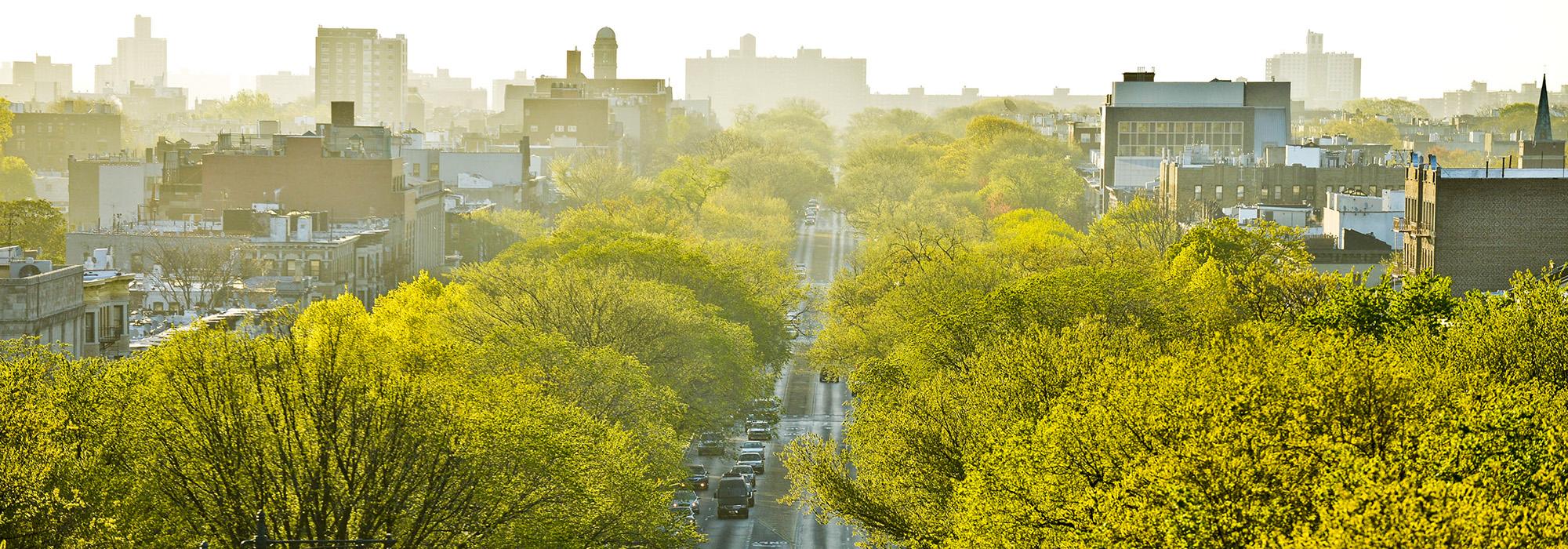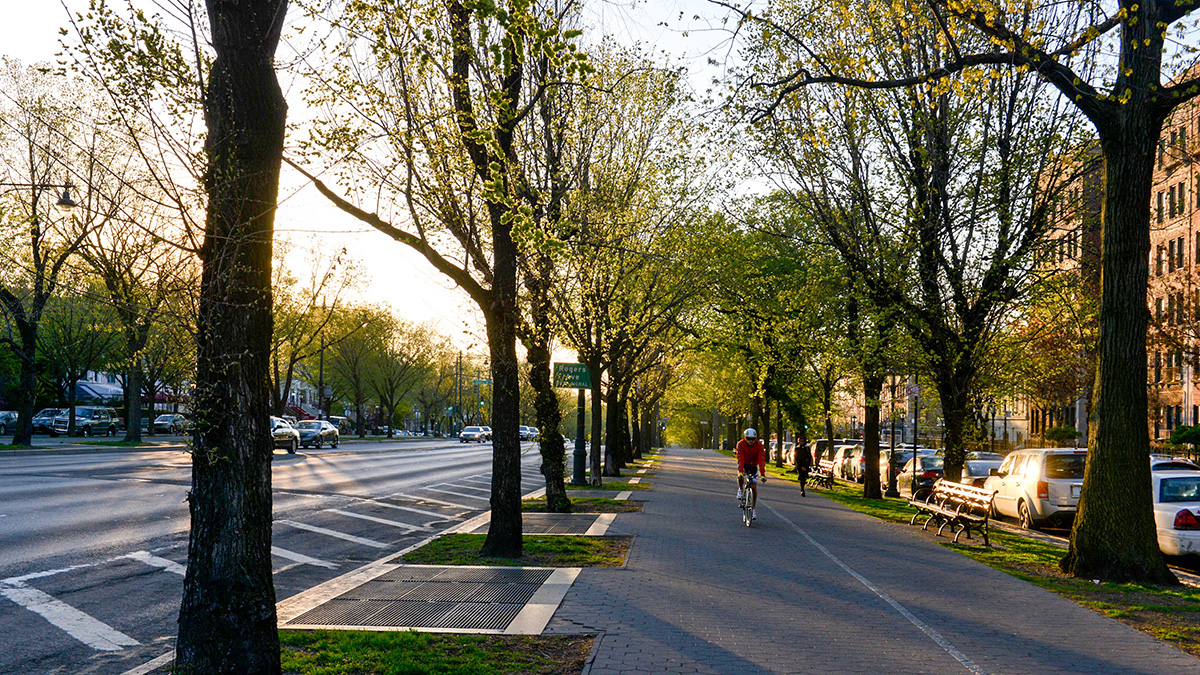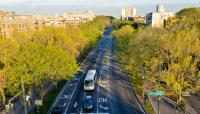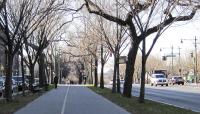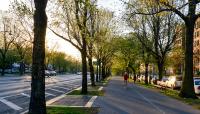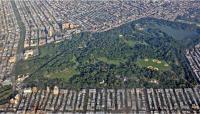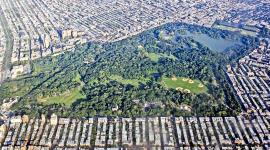Landscape Information
First conceived by Frederick Law Olmsted, Sr. and Calvert Vaux in 1866, Eastern Parkway was constructed between 1870 and 1874. It was modeled on boulevards Olmsted had seen abroad in the late 1850s such as Avenue de l’Impératrice in Paris and Unter der Linden in Berlin. The parkway, the first of its kind in the U.S., was intended to create a link between New York City and the outer boroughs and act as both a transit link and pleasure drive. Olmsted and Vaux’s original design intent called for a city-wide system of parks linked by scenic roadways: Eastern Parkway would pass across Prospect Park and extend to Central Park via a bridge and then on to the Hudson River, while Ocean Parkway would connect from Prospect Park to the Atlantic Ocean. A two-mile extension was designed by John Culyer from 1890 to 1893 linking Prospect Park to Highland Park.
Eastern Parkway is now one of the busiest roads in the city. At its origin at the northern tip of Prospect Park, the Parkway consists of a broad six-lane roadway flanked by two tree-lined pedestrian malls that also serve as bike lanes, and two service roadways for slower local traffic. It runs a distance of roughly 3.8 miles, from Grand Army Plaza, east to Ralph Avenue, curving north to Broadway, and then extending to Bushwick Avenue. The section between the Plaza and Ralph Avenue was designated a National Historic Landmark in 1978, and still retains much of its original character as a place for strolling, leisure and recreation.



